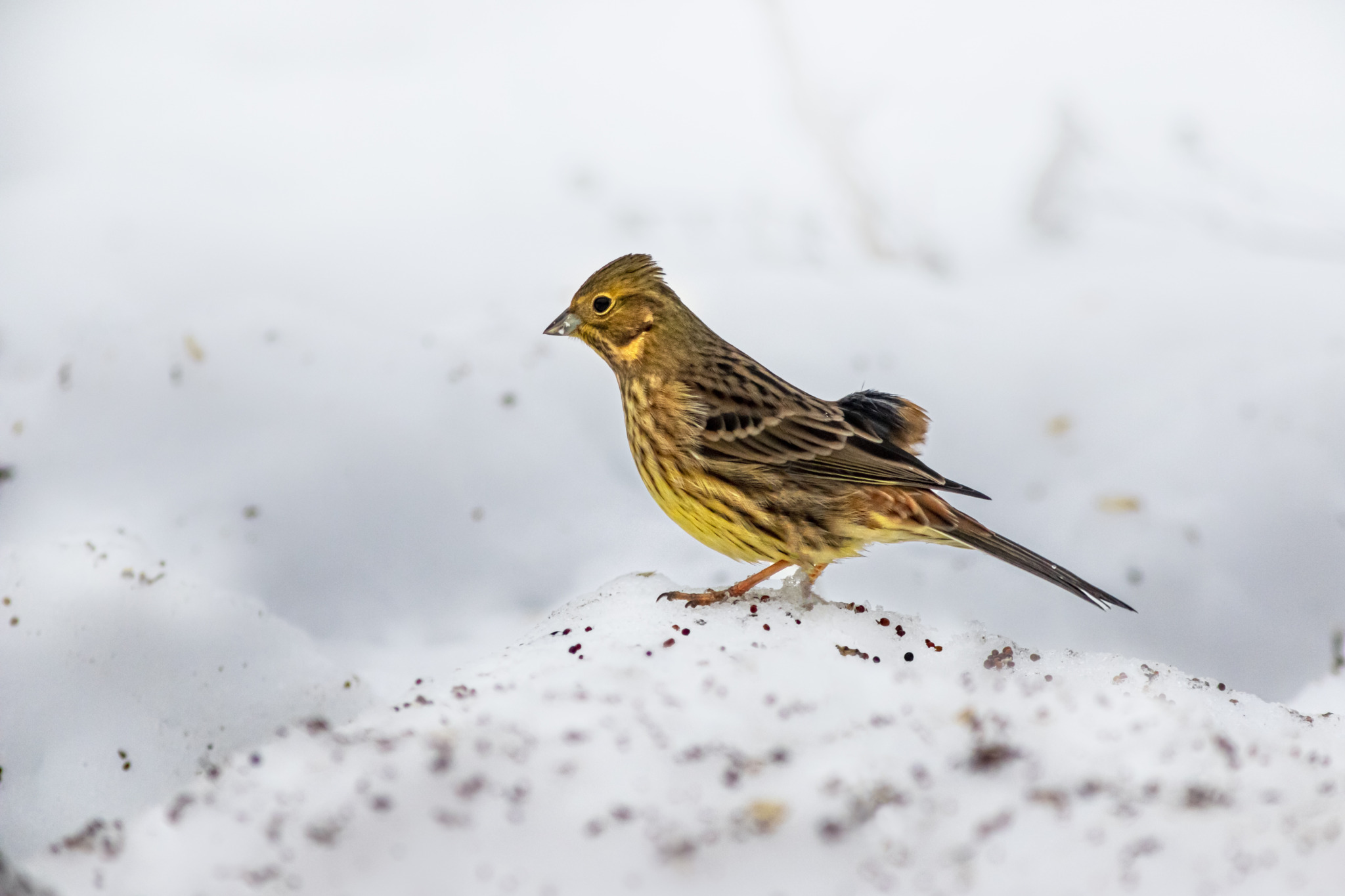Deep Overview: Yellowhammer (Emberiza citrinella)
The Yellowhammer (Emberiza citrinella) is a small passerine bird from the bunting family (Emberizidae), known for its bright yellow plumage and distinctive, rhythmic song that sounds like “a little bit of bread and no cheese”. This species thrives in open countryside, farmland, hedgerows, and grasslands across Europe and Asia. Despite being a common sight, its populations have declined in some regions due to agricultural intensification and habitat loss.
Taxonomy & Classification
- Kingdom: Animalia
- Phylum: Chordata
- Class: Aves
- Order: Passeriformes (Perching Birds)
- Family: Emberizidae (Buntings)
- Genus: Emberiza
- Species: Emberiza citrinella
- Common Name: Yellowhammer
Physical Description
- Size:
- Length: 16–17 cm
- Wingspan: 23–29 cm
- Weight: 20–30 g
- Plumage & Markings:
- Male:
- Bright yellow head, throat, and belly
- Chestnut-brown back with dark streaks
- Yellow underparts with some brownish tint
- White outer tail feathers visible in flight
- Female:
- Duller, more brownish-yellow, with heavier streaking
- Less vibrant than the male but still has yellow tones
- Juveniles:
- More brownish overall, with faint yellow tinges
- Male:
- Distinctive Features:
- Yellow face and underparts
- Reddish-brown back with streaks
- Thin, pointed beak adapted for seed eating
Distribution & Habitat
- Geographic Range:
- Widespread across Europe and western Asia
- Found in the UK, Scandinavia, Russia, and parts of Central Asia
- Introduced to New Zealand and Australia, where it has established populations
- Preferred Habitat:
- Open countryside, farmland, hedgerows, woodland edges, and grasslands
- Prefers mixed agricultural landscapes with scattered trees and shrubs
- Found at elevations up to 1,500 meters in mountainous regions
Behavior & Adaptations
- Activity Pattern:
- Diurnal (active during the day)
- Flight Pattern:
- Undulating flight with short bursts of flapping
- Social Behavior:
- Solitary or in pairs during the breeding season
- Forms small flocks in autumn and winter, sometimes joining other buntings and finches
- Territoriality:
- Males are highly territorial and sing persistently to defend their area
- Camouflage & Adaptations:
- The streaked brown back helps it blend with the ground while foraging
Song & Vocalizations
- Famous Song:
- Recognizable “A little bit of bread and no cheese” rhythm
- A clear, melodic series of short, repeated notes
- Other Calls:
- Sharp “tzik” alarm call
- Soft twittering sounds during social interactions
Diet & Feeding Habits
- Primary Diet:
- Seeds (especially from grasses and cereal crops)
- Insects (mainly during breeding season)
- Feeding Behavior:
- Feeds mostly on the ground, picking seeds from grasses and soil
- Will visit bird feeders in winter for seeds and grains
- During summer, feeds insects to chicks for protein
Reproduction & Life Cycle
- Breeding Season:
- April to August, with two to three broods per year
- Mating Behavior:
- Males sing from hedgerows, bushes, or fence posts to attract females
- Nesting:
- Nests on or near the ground, hidden in grassy vegetation or shrubs
- Cup-shaped nest made from grass, roots, and moss, lined with soft materials
- Eggs & Incubation:
- Clutch size: 2–6 eggs
- Eggs: Pale, creamy-white with fine purple-brown streaks
- Incubation period: 12–14 days (female incubates)
- Fledging period: Chicks leave the nest at 11–13 days old but are fed by parents for a while
- Lifespan:
- Typically 2–3 years, though some live up to 5–6 years
Predators & Threats
- Natural Predators:
- Birds of prey (hawks, kestrels)
- Mammals (foxes, weasels, domestic cats)
- Nest predators (crows, magpies, snakes)
- Human-Related Threats:
- Agricultural intensification (reduction in hedgerows and wild field margins)
- Pesticide use, which reduces insect availability for chicks
- Climate change, affecting breeding and food sources
- Conservation Status:
- Least Concern (IUCN Red List) but declining in parts of Western Europe
- Protected under the Birds Directive in Europe
Ecological Importance
- Seed Dispersal:
- Helps spread grass and plant seeds
- Pest Control:
- Consumes insect pests in agricultural areas
- Indicator Species:
- Presence indicates healthy farmland habitats
Relationship with Humans
- Cultural Significance:
- Featured in British folklore and poetry
- Inspired the Old English folk song about its call
- Attraction to Gardens:
- Can be attracted by hedgerows, wildflower patches, and seed feeders
- Threatened by Agricultural Changes:
- Conservation efforts include wildflower strips and hedgerow restoration
Similar Species & Identification
- Cirl Bunting (Emberiza cirlus)
- Darker markings, greenish tones on the back
- Corn Bunting (Emberiza calandra)
- Lacks yellow plumage, more streaked brown overall
- Reed Bunting (Emberiza schoeniclus)
- More associated with wetlands, has a black head (males)
Fun Facts
- Males sing from high perches to declare territory and attract females
- Famous in folklore, with its song being described in poetry and nursery rhymes
- Introduced to New Zealand, where it is now a common farmland bird
- Has a highly structured song, which varies slightly between regions
Conclusion
The Yellowhammer (Emberiza citrinella) is a vibrant, melodious farmland bird, easily recognizable by its bright yellow plumage and distinctive song. It thrives in open countryside, grasslands, and agricultural landscapes, feeding on seeds and insects. Though still widespread, habitat loss and modern farming practices have led to declines in some areas. Conservation efforts, including hedgerow planting and reduced pesticide use, are crucial to maintaining healthy populations.
Views: 466
Subscribe to the newsletter:
